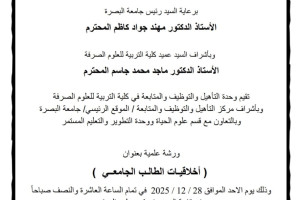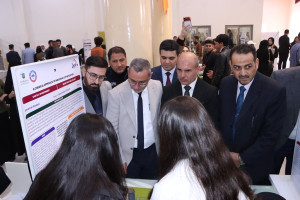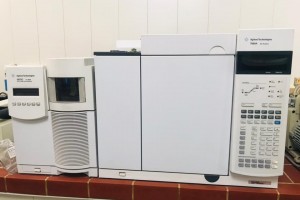
Empowered researchers: Assistant Professor Ahmed Majid Jassim, Professor Adel Amala Damad from the Department of Chemistry - College of Education for Pure Sciences - University of Basra
Who published a research titled
Synthesis, Antimicrobial Activity, Anti‐HIV Activity, and Molecular Docking of Novel 5‐, 6‐ and 7‐Membered Ring (1H‐Pyrrol‐2‐yl)aminolactams
Preparation and study of the antimicrobial and anti-HIV activity and molecular fusion of the 5, 6, and 7-atom rings of (1H‐Pyrrol‐2‐yl)aminolactams.
In Journal: ChemistrySelect
Impact factor: 1.811
In the publishing house: Wiley
It is included in the container: Clarvet and Scopus
Summary:
An effective method has been developed for the preparation of new cyclic (lactam) compounds consisting of 5-6-7 (1H-pyrrol-2-yl) aminolactams. This method was characterized by the reaction of Ugi-4-centre-3 type (U4 C3 C) followed by the transformation reaction of the product of Ugi. All the new cyclic compounds (1H-pyrrol-2-yl) aminolactams after the process of proving their structure by various spectroscopic methods were examined against six microbial species and the results showed that these cyclic compounds were moderate to good activity. These lactams were also tested in vitro to evaluate the antiviral activity of HIV-1 and HIV-2 replication type MT-4 cells for an in vitro type test. The test results showed that one of the cyclic lactams was of great importance in terms of inhibition against HIV-1 replication in the cell line with an EC50 value of 2.74° 1.08 µM (CC50 of 18.93° 4.0 µM), and SI 6. In addition, the complex was stabilized with essential proteins. For HIV-1 and HIV-2 reverse transcriptase (RT) enzymes, including HIV-1 and HIV-2. Molecular docking of the studied compound with PDB-type proteins (PDB ID: 1EP4, 1FK9, 1HNV, 1VRU, 3DLE, 3DLG, and 3MEC). The results of the molecular docking proved that the bonding is important in the form of hydrogen bonding between the studied compound and the proteins, as well as some important bonds between the compound and the essential amino acid residues of HIV-1 and HIV-2 (RT) proteins.








